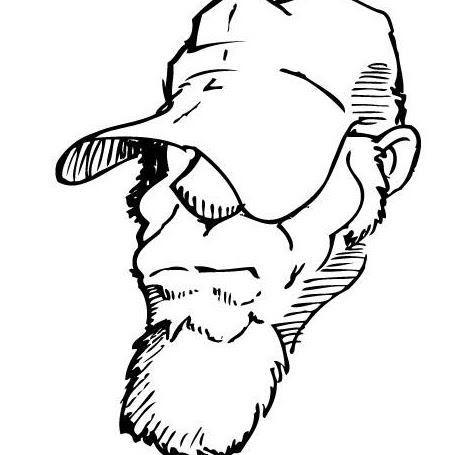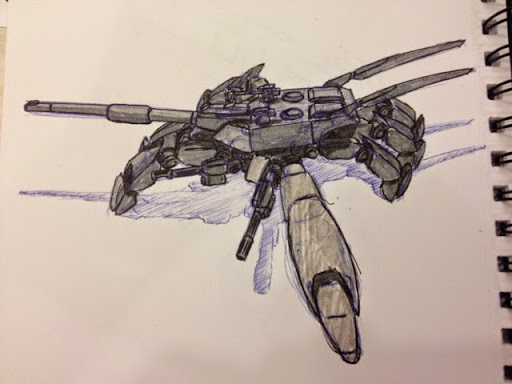Jason L Hoover
age ~47
from Blue Ridge, TX
- Also known as:
-
- Jason Lee Hoover
- Jason L Rasmussen
Jason Hoover Phones & Addresses
- Blue Ridge, TX
- USAF Academy, CO
- Universal City, TX
- Fort Worth, TX
- Salem, OR
- Puyallup, WA
- Savannah, GA
- Albuquerque, NM
- Hallsville, TX
Vehicle Records
-
Jason Hoover
view source -
Address:6304 N Park Dr, Watauga, TX 76148
-
VIN:1XP5DB9X67D635876
-
Make:Renault
-
Model:Alliance 2dr Sedan L 4-S
-
Year:2007
Medicine Doctors

Jason M. Hoover
view sourceSpecialties:
Surgery , Neurological
Work:
Texas Brain & Spine Institute
8441 State Hwy 47 STE 4300, Bryan, TX 77807
9797768896 (phone), 9797740716 (fax)
8441 State Hwy 47 STE 4300, Bryan, TX 77807
9797768896 (phone), 9797740716 (fax)
Education:
Medical School
Texas Tech University Health Science Center School of Medicine - Lubbock
Graduated: 2006
Texas Tech University Health Science Center School of Medicine - Lubbock
Graduated: 2006
Procedures:
Craniotomy
Lumbar Puncture
Spinal Cord Surgery
Spinal Fusion
Spinal Surgery
Lumbar Puncture
Spinal Cord Surgery
Spinal Fusion
Spinal Surgery
Conditions:
Intervertebral Disc Degeneration
Intracranial Injury
Liver Cancer
Intracranial Injury
Liver Cancer
Languages:
English
Spanish
Spanish
Description:
Dr. Hoover graduated from the Texas Tech University Health Science Center School of Medicine - Lubbock in 2006. He works in Bryan, TX and specializes in Surgery , Neurological. Dr. Hoover is affiliated with Baylor Scott & White Hospital Taylor, College Station Medical Center and St Joseph Regional Health Center.
Us Patents
-
Vehicle Location System
view source -
US Patent:20220301438, Sep 22, 2022
-
Filed:Jun 6, 2022
-
Appl. No.:17/805630
-
Inventors:- McLean VA, US
Geoffrey Dagley - McKinney TX, US
Jason Richard Hoover - Grapevine TX, US
Stephen Michael Wylie - Carrollton TX, US
Qiaochu Tang - Frisco TX, US -
Assignee:Capital One Services, LLC - McLean VA
-
International Classification:G08G 1/00
G06F 16/9535 -
Abstract:A computer system receives a request to locate a vehicle within a facility. The computer system parses the request to identify one or more characteristics of the vehicle. The computer system identifies a sensor corresponding to the vehicle based on the one or more characteristics of the vehicle. The computer system identifies a most recent location of the vehicle based on the last registered position of the vehicle within the facility. The computer system transmits a signal to a parking spot sensor at the most recent location of the vehicle in the facility. The computer system receives the unique identification. The computer system determines that the unique identification of the vehicle sensor co-located with the parking spot sensor matches the sensor of the requested vehicle. The computer system reports to the user a current location of the vehicle within the facility based on a location of the parking spot sensor.
-
Using Augmented Reality Markers For Local Positioning In A Computing Environment
view source -
US Patent:20210398362, Dec 23, 2021
-
Filed:Sep 3, 2021
-
Appl. No.:17/466100
-
Inventors:- McLean VA, US
Geoffrey DAGLEY - McKinney TX, US
Qiaochu TANG - The Colony TX, US
Jason HOOVER - Grapevine TX, US
Stephen WYLIE - Carrollton TX, US -
Assignee:Capital One Services, LLC - McLean VA
-
International Classification:G06T 19/20
G06K 9/00
G06T 19/00
G06T 7/70 -
Abstract:Techniques for providing indirect local geo-positioning using AR markers are disclosed. A first movable AR marker can be located or found by a computing device. A location of the first movable AR marker can be known and shared with the computing device. The location of the first movable AR marker can be based on distance between the first movable AR marker and a fixed AR marker. A distance to the first movable AR marker can be determined. Based on the known location of the first movable AR marker and the distance to the first movable AR marker from the computing device, an estimate of the location of the computing device can be determined without having line-of-sight (LOS) to the fixed AR marker.
-
Machine Learning Artificialintelligence System For Identifying Vehicles
view source -
US Patent:20210256320, Aug 19, 2021
-
Filed:Feb 26, 2021
-
Appl. No.:17/187322
-
Inventors:- McLean VA, US
Geoffrey Dagley - McKinney TX, US
Qiaochu Tang - The Colony TX, US
Sean Reddy - New York NY, US
Jason Richard Hoover - Grapevine TX, US
Stephen Michael Wylie - Carrollton TX, US
Micah Price - Plano TX, US -
Assignee:Capital One Services, LLC - McLean VA
-
International Classification:G06K 9/62
G06K 9/46
G06N 3/02
G06N 20/00
G06F 16/583
G06K 9/22
G06N 3/04
G06K 9/00
G06N 3/08 -
Abstract:An artificial intelligence system for identifying attributes in an image. The system may include a processor in communication with a client device; and a storage medium. The storage medium may store instructions that, when executed, configure the processor to perform operations including: extracting first features; categorizing the first images in a first group or a second group; modifying first metadata associated with each image in the first images to include a binary label; calculating a classification function; classifying a second plurality of images using the classification function; extracting second features from the second images classified in the first group; categorizing the second images in the first group by attribute; calculating an attribute identification function that identifies attributes of the second images; and identifying at least one attribute associated with a client image using the attribute identification function, the client image being received from the client device.
-
Systems And Methods For Using A Predictive Engine To Predict Failures In Machine-Learning Trained Systems
view source -
US Patent:20210117994, Apr 22, 2021
-
Filed:Oct 22, 2019
-
Appl. No.:16/659873
-
Inventors:- McLean VA, US
Stephen ANDERSON - Plano TX, US
Stephen WYLIE - Carrollton TX, US
Qiaochu TANG - The Colony TX, US
Micah PRICE - Plano TX, US
Jason HOOVER - Grapevine TX, US
Kristen Przano - Dallas TX, US -
Assignee:Capital One Services, LLC - McLean VA
-
International Classification:G06Q 30/02
G06N 20/00
G06K 9/62 -
Abstract:A computer-implemented method for using a machine-learning trained predictive engine to predict failures includes receiving electronic prior transaction data corresponding to a plurality of prior successful transactions and a plurality of prior unsuccessful transactions, and training a machine learning predictive engine based on the plurality of prior successful transactions and the plurality of prior unsuccessful transactions. Electronic transaction data may be received, the electronic transaction data being associated with a user, an item, and candidate transaction terms, the electronic transaction data being associated with a candidate transaction. The machine learning predictive engine may determine a likelihood of success of the candidate transaction based on the electronic transaction data, and display the likelihood of success of the candidate transaction.
-
Overlaying 3D Augmented Reality Content On Real-World Objects Using Image Segmentation
view source -
US Patent:20210090346, Mar 25, 2021
-
Filed:Dec 8, 2020
-
Appl. No.:17/114983
-
Inventors:- McLean VA, US
Geoffrey DAGLEY - McKinney TX, US
Staevan DUCKWORTH - The Colony TX, US
Qiaochu TANG - The Colony TX, US
Jason HOOVER - Grapevine TX, US
Stephen WYLIE - Carrollton TX, US
Olalekan AWOYEMI - Prosper TX, US -
Assignee:Capital One Services, LLC - McLean VA
-
International Classification:G06T 19/00
G06T 7/73
G06T 7/60
G06T 7/12
G06T 7/13
G06T 17/00
G06K 9/00 -
Abstract:Various embodiments are generally directed to techniques of overlaying a virtual object on a physical object in augmented reality (AR). A computing device may receive one or more images of the physical object, perform analysis on the images (such as image segmentation) to generate a digital outline, and determine a position and a scale of the physical object based at least in part on the digital outline. The computing device may configure (e.g., rotate, scale) a 3D model of the physical object to match the determined position and scale of the physical object. The computing device may place or overlay a 3D virtual object on the physical object in AR based on a predefined location relation between the 3D virtual object and the 3D model of the physical object, and further, generate a composite view of the placement or overlay.
-
Visualizing Vehicle Condition Using Extended Reality
view source -
US Patent:20210073746, Mar 11, 2021
-
Filed:Nov 20, 2020
-
Appl. No.:16/949933
-
Inventors:- McLean VA, US
Micah PRICE - Anna TX, US
Jason HOOVER - Grapevine TX, US
Stephen WYLIE - Carrollton TX, US
Geoffrey DAGLEY - McKinney TX, US -
International Classification:G06Q 10/00
G07C 5/08
G07C 5/00
G06T 7/70
G06K 9/00 -
Abstract:Various aspects described herein generally relate to visualizing a vehicle history using extended reality. In some implementations, an extended reality device may obtain image data corresponding to one or more vehicle parts that are visible in a field of view of the extended reality device. The extended reality device may identify one or more anchor points in a coordinate space corresponding to the field of view of the extended reality device and obtain a vehicle history report based on an identifier associated with the vehicle. The extended reality device may obtain digital content based on one or more records contained in the vehicle history report and an expected visual appearance of the one or more parts of the vehicle. The extended reality device may render the digital content on a display of the extended reality device. Various other aspects are provided.
-
Vehicle Identification Driven By Augmented Reality (Ar)
view source -
US Patent:20210056611, Feb 25, 2021
-
Filed:Jun 26, 2020
-
Appl. No.:16/946549
-
Inventors:- McLean VA, US
Geoffrey Dagley - McKinney TX, US
Micah Price - Anna TX, US
Avid Ghamsari - Frisco TX, US
Jason Hoover - Grapevine TX, US -
International Classification:G06Q 30/06
G06T 19/00
G06T 15/00 -
Abstract:A device receives user rendering data for a 3-D rendering of a user. The 3-D rendering is a proportional representation of the user and the user rendering data is available via an application. The device determines user characteristics of the user. The device receives an indication that a user device has submitted a vehicle search request. The device identifies vehicles to recommend to the user based on an analysis of: the user characteristics, and vehicle characteristics for a collection of vehicles being offered via the application. The device causes vehicle description data for the vehicles to be displayed via an interface of the application. The device receives user interaction data that indicates a user selection of vehicle. The device causes, based on receiving the user interaction data, the interface of the application to display a placement of the 3-D rendering of the user into a 3-D rendering of the vehicle.
-
Using Augmented Reality Markers For Local Positioning In A Computing Environment
view source -
US Patent:20210056766, Feb 25, 2021
-
Filed:Feb 4, 2020
-
Appl. No.:16/781186
-
Inventors:- McLean VA, US
Geoffrey DAGLEY - McKinney TX, US
Qiaochu TANG - The Colony TX, US
Jason HOOVER - Grapevine TX, US
Stephen WYLIE - Carrollton TX, US -
Assignee:Capital One Services, LLC - McLean VA
-
International Classification:G06T 19/20
G06K 9/00
G06T 7/70
G06T 19/00 -
Abstract:Techniques for providing indirect local geo-positioning using AR markers are disclosed. A first moveable AR marker can be located or found by a computing device. A location of the first moveable AR marker can be known and shared with the computing device. The location of the first moveable AR marker can be based on distance between the first moveable AR marker and a fixed AR marker. A distance to the first moveable AR marker can be determined. Based on the known location of the first moveable AR marker and the distance to the first moveable AR marker from the computing device, an estimate of the location of the computing device can be determined without having line-of-sight (LOS) to the fixed AR marker.
Resumes

Lead, Sales Representative
view sourceLocation:
Dallas, TX
Industry:
Defense & Space
Work:
United States Air Force Mar 2016 - Apr 2018
Squadron Superintendent and Chief Enlisted Manager
Transitioning Military Mar 2016 - Apr 2018
Unemployed
United States Air Force Jul 2015 - Mar 2016
Major Command Functional and Training Pipeline Manager
United States Air Force Jul 2011 - Jul 2015
Tacp Project Officer
United States Air Force Apr 2005 - Jul 2011
Special Operations Forces Tacp and Jtac Instructor and Evaluator
Squadron Superintendent and Chief Enlisted Manager
Transitioning Military Mar 2016 - Apr 2018
Unemployed
United States Air Force Jul 2015 - Mar 2016
Major Command Functional and Training Pipeline Manager
United States Air Force Jul 2011 - Jul 2015
Tacp Project Officer
United States Air Force Apr 2005 - Jul 2011
Special Operations Forces Tacp and Jtac Instructor and Evaluator
Education:
American Military University
Skills:
C4Isr
Military
Special Operations
Leadership
Air Force
Military Experience
Military Operations
Dod
Command and Control
National Security
Defense
Command
Intelligence Analysis
Force Protection
Security Clearance
Top Secret
Operations Management
U.s. Department of Defense
Strategic Planning
Program Management
Data Analysis
Operational Planning
Combat
Tactics
Quality Assurance
Agile Project Management
Microsoft Office
Cross Functional Team Leadership
Training and Development
Communication
Organization Skills
Technical Management
Continuous Process Improvement
Military
Special Operations
Leadership
Air Force
Military Experience
Military Operations
Dod
Command and Control
National Security
Defense
Command
Intelligence Analysis
Force Protection
Security Clearance
Top Secret
Operations Management
U.s. Department of Defense
Strategic Planning
Program Management
Data Analysis
Operational Planning
Combat
Tactics
Quality Assurance
Agile Project Management
Microsoft Office
Cross Functional Team Leadership
Training and Development
Communication
Organization Skills
Technical Management
Continuous Process Improvement

Senior Consultant
view sourceLocation:
P/O Box 369024, Columbus, OH
Industry:
Defense & Space
Work:
United States Air Force
Tactical Air Control Party
Senior Consultant
Tactical Air Control Party
Senior Consultant
Education:
American Military University 2004 - 2014
Bachelors, Bachelor of Arts, Management Community College of the Air Force 2000 - 2008
Associates, Associate of Arts, Information Systems Management
Bachelors, Bachelor of Arts, Management Community College of the Air Force 2000 - 2008
Associates, Associate of Arts, Information Systems Management
Skills:
Air Force
Dod
Security Clearance
Military
Top Secret
Information Assurance
National Security
Military Operations
Military Experience
Defense
Command
Special Operations
C4Isr
Command and Control
Intelligence Analysis
Force Protection
Dod
Security Clearance
Military
Top Secret
Information Assurance
National Security
Military Operations
Military Experience
Defense
Command
Special Operations
C4Isr
Command and Control
Intelligence Analysis
Force Protection
Interests:
Animal Welfare
Children
Children
Certifications:
Professional Manager Certification

Jason Hoover
view source
Jason Hoover
view source
Jason Hoover
view sourceSkills:
Customer Service
Leadership
Research
Leadership
Research
Name / Title
Company / Classification
Phones & Addresses
GQP SERVICES LLC
CANON CONSTRUCTION, LLC
Director
D, D & H ENTERPRISES, INCORPORATED
7836 Pr Dr, Fort Worth, TX 76148
6304 Northpark Dr, Fort Worth, TX 76148
6304 Northpark Dr, Fort Worth, TX 76148
Plaxo

Jason M. Hoover
view sourceNettie, WVI love to work and hang out with friends.

Jason Hoover
view sourceSpace CityI would die for peanut butter !!!

Hoover, Jason S
view sourceLake Mills, WI

Jason Hoover
view sourceBryn Mawr, PA
News

Driver of getaway car in fatal Ypsilanti Township robbery sentenced to prison
view source- 6, drove his brother Willie Walker and James Lester to the Schooner Cove Apartments in Ypsilanti Township, where Willie Walker and Lester robbed Jason Hoover. Willie Walker pleaded guilty in June to second-degree murder for firing the shot that killed ...
Classmates

Jason Hoover
view sourceSchools:
Sandy Springs Middle School Atlanta GA 1982-1984, Capitol Heights Junior High School Montgomery AL 1983-1985
Community:
James King, Margaret Troutman

Jason Hoover
view sourceSchools:
Roaring Spring High School Roaring Spring PA 1986-1990
Community:
Bonnie Hair, Lester Housel, Alexis Totten

Jason Hoover
view sourceSchools:
Rosedale Christian Academy Winchester VA 1990-1994

Jason Hoover
view sourceSchools:
Estes Park Elementary School Estes Park CO 1987-1989
Community:
Jenni Dirks, Zamantha Lopez

Jason Hoover
view sourceSchools:
Gilman High School Gilman WI 1994-1998
Community:
Deborah Bradford, Rosalie Kowalczyk

Jason Hoover
view sourceSchools:
Christian Temple High School North Richland Hills TX 1990-1993
Community:
Matt Hybarger, Richard Sherman, Eric Bringas, Desiree Hernandez

Jason Hoover
view sourceSchools:
Central High School Martinsburg PA 1986-1990
Community:
Shirley Finnegan, Barb Reid, Louise Butler
Myspace

Jason Hoover
view source
Hoover (Jas Hoover) MySp...
view sourceMyspace profile for Jason Hoover. Find friends, share photos, keep in touch with classmates, and meet new people on Myspace.
Googleplus

Jason Hoover
Work:
Northwestern Mutual Life Insurance Company - Finanial Representative
Education:
Kansas State University - Economics
Relationship:
Single
About:
Student at Kansas State Universtiy
Tagline:
Economics student at Kansas State University and member of Delta Upsilon Fraternity
Bragging Rights:
DU Recruitment VP

Jason Hoover
Work:
JABB pictures - Owner
Tagline:
I make movies.

Jason Hoover
Work:
San Antonio Fire Department - Firefighter

Jason Hoover
Work:
Steel Dynamics

Jason Hoover
Work:
Aerospace chemical miller

Jason Hoover
Tagline:
I live my life to be a Champion for God

Jason Hoover
Tagline:
Love mecha design and manga.

Jason Hoover

Jason Hoover
view source
Jason Grant Hoover
view source
Jason Hoover
view source
Jason Hoover
view source
Jason Hoover
view source
Jason Hoover
view source
Jason Hoover
view source
Jason Scott Hoover
view sourceYoutube
Get Report for Jason L Hoover from Blue Ridge, TX, age ~47











